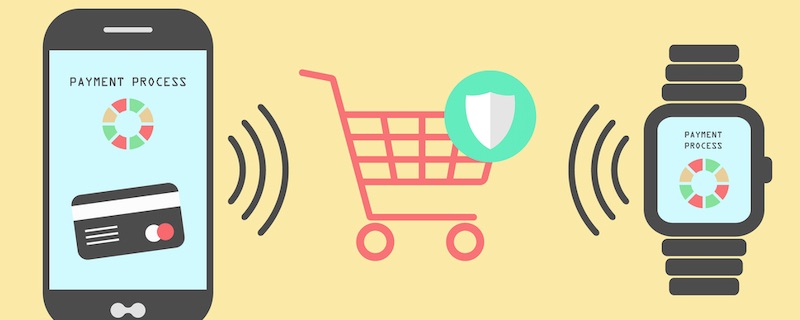
There’s a long list of innovators in online payments, such as Apple Pay, Google Pay, Samsung Pay, WeChat Pay, Alipay, and many more. Ecommerce merchants should demystify these “pays” and create strategies that will advance their business.
Every week there seems to be another entry into the world of digital payments. The latest is Facebook Pay, which, according to Facebook, “… will provide people with a convenient, secure and consistent payment experience across Facebook, Messenger, Instagram and WhatsApp.”
Facebook Pay joins a long list of innovators in online payments, including Apple Pay, Google Pay, Samsung Pay, WeChat Pay, Alipay, PayPal, Amazon Pay, Venmo, Masterpass, Visa Checkout, and many more.
It’s time to demystify all of these “pays” and create a strategy to advance your ecommerce business.
The list of digital payment options can be simplified and divided into two categories — “platform dependent” or “site-integrated” — depending on the customer experience.
Platform-dependent Payments
The first category can be described as “we’ll take your customers in exchange for exposing your business to a larger group of users.” In other words, your success as an ecommerce merchant depends on the success of the social media or marketplace platform — think Amazon Pay, Facebook Pay (available to users of Facebook, Instagram, and WhatsApp), and shoppable Snapchat ads. Your customers are now on a platform that you do not control.
Platform-dependent payments offer access to thousands or even millions of potential customers. Unfortunately, that access comes at a steep price: customer experience.
Enjoying the benefits of, say, Facebook Pay or Amazon Pay means that you give up significant if not complete control over:
- The customer-acquisition funnel.
- The path-to-purchase journey.
- The look and feel of your ecommerce operation and overall user-experience.
- The checkout and payment process.
- The post-payment upsell opportunity.
- A/B testing.
- Remarketing.
- The opportunity to collect and analyze customer data.
Merchants who offer platform-dependent payments should first answer a few key questions. Are you willing to let Facebook and other platforms control the shopping experience for your customers? Can you accept the risk of distractions during the purchase journey? (It’s a whole new level of cart abandonment.) Would access to thousands of new customers mitigate these risks?
Site-integrated Payments
The second category of “pays” — including services such as PayPal, Google Pay, Apple Pay, Visa Checkout, and Masterpass — are integrated directly into an ecommerce site, which retains control over the customer-shopping experience. The integrated provider handles only payment acceptance.
With site-integrated payments, merchants can create, test, and modify the path-to-purchase funnel. Merchants can determine when to introduce upsells and remarketing. And the risk of social and commercial distractions is much less.
Payment gateways are the original site-integrated providers. Years before the “pays,” ecommerce businesses relied on traditional payment gateway integrations with providers such as Authorize.Net and Stripe. Gateways allow merchants to accept online credit card payments in a user-friendly, secure manner while the shopper remains on your site, inside of your conversion funnel.
Almost all ecommerce platforms (e.g., Shopify, Magento) have built-in payment acceptance, allowing merchants to concentrate on running their businesses instead of maintaining gateway integrations and complex payment authorization procedures.
Consumers are accustomed to paying in the traditional, site-integrated manner. Thus merchants should continue offering this option. It works, after all.
However, merchants should occasionally check with their gateway provider for new features that might help their business as more of the innovative payment technologies (i.e., the “pays”) become common. Most payment processors and ecommerce platforms offer low-risk, low-effort ways to get started with the “pays.” For example, Amazon Pay and Alipay are features of Shopify Payments.
When considering one or more of the recent payment innovations, merchants should ask:
- How do my customers want to pay?
- Does the new payment service add convenience, or confusion?
- Will I have to modify my existing checkout experience?
- Are customers ready for a new checkout experience?
- Is my business ready to train and support customers as they work through a new checkout flow?
- Is the new technology simple to integrate?
- What are the costs?
- Can I cover those costs with an increase in revenue generated by the new feature?
Fees
None of the “pays” are free. Generally, and perhaps cynically, companies that develop new payment processes aim to:
- Increase their presence and their grip on a market. Google Pay and Apple Pay receive a portion of the transaction fees, which, as usual, is passed to the merchant.
- Collect massive amounts of data, which can generate revenue for other parts of their businesses. Facebook, Google, and Apple have mastered data collection — not always for the benefit of consumers and merchants.
- Make it difficult for customers to leave. Consumers are less likely to abandon an iPhone if their credit card is stored on it.
Unfortunately, innovation in payments doesn’t translate to lower processing fees for merchants. It’s up to each merchant to weigh the costs of implementing one or more of the “pays” against the potential for acquiring more customers.
Using the ‘Pays’
1. Appropriate for your business? Determine if platform-dependent payments fit your business. Allowing your customers to use Facebook Pay, for example, means that they will be shopping on Facebook, Instagram, or WhatsApp. Is your business allowed to sell on Facebook? Are your competitors there already? Would access to a large prospect base be worth the loss of control? Are the costs of running your business on Facebook reasonable?
2. Strengthen and improve. As platform-dependent payments proliferate, try to strengthen other aspects of your business. Consider:
- Investing in a custom experience for your site to differentiate it from monoliths such as Facebook, Amazon, and Instagram. Show your customers why you are independent and unique.
- Emphasizing your mission, your values, and how you treat customers.
- Tightening your privacy protection and information security. Big tech companies are hammered for alleged privacy violations and security breaches. Demonstrate how your business is better.
- Implementing loyalty programs to reward repeat customers.
- Building your own “pay” solution by storing cards on file. Most payment processors and gateways offer PCI-compliant, tokenized card-on-file services. Once implemented, you can offer quick-buy buttons, repeat payments, and instant checkouts. Be creative. Brand it and promote it as your business’s “pay.”
3. Choose one platform. Start slowly. Begin with a simple business case in which you calculate the benefits and the costs. Don’t forget the fees from the external platforms. It could be a small amount for a large increase in sales.
Conversely, it could be a logistical headache. For example, how will you accept new orders and handle fulfillment? Do you have the time and resources to maintain multiple sales channels? Measure everything. Collect as much data as possible to make rational business decisions.
4. Post-purchase opportunities. Take advantage of post-purchase upsell and promotion opportunities. Even if the sale is completed on an external platform, you will typically be responsible for order fulfillment. This is your chance to promote your business, via:
- Order status email and text messages.
- Promotional materials and inserts.
- Free samples.
- Unique, value-added unboxing experiences.




